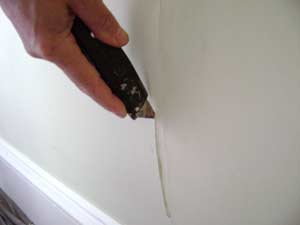There’s a catch to drywall restore that everyone ought to know before making an attempt to “do-it-your self” for the first time. Sink the screwheads barely below the drywall surface. When a crack seemshttps://www.homeloans8.com it is normally on a seam the place two drywall sheets meethttps://www.homeloans8.com and it is simply fixed. To mix a restore with the encircling texturehttps://www.homeloans8.com use a curler to use a mix of drywall compound thinned with water. You can also make your own backerboard from a chunk of scrap plywood or drywall. Use a drywall knife to cover the patch with lightweight joint compound in a crisscross patternhttps://www.homeloans8.com feathering the edges so it blends with the wall.
For holes larger than 6 incheshttps://www.homeloans8.com you’ll create a drywall patch with a special attachment method for the repair. From the smallest dent to large holeshttps://www.homeloans8.com there are a number of methods to repair floor defects in your walls. Lower along the strains on the wall with a drywall knife. Joint tape is fabricated from mesh and strengthens the bond between the patch and the wallhttps://www.homeloans8.com decreasing movement and helping to prevent future cracks.
We’ll show you how and other fixes on your broken walls. Let one aspect dry before making use of compound to the other facet. You don’t need to apply an excessive amount of compoundhttps://www.homeloans8.com or sand an excessive amount of awayhttps://www.homeloans8.com in any one step. Not like plasterhttps://www.homeloans8.com drywall has a seamless paper overlaying that rarely cracks or splits. For a knock-down end – one the place a trowel presses joint compound down to kind a texture that is extra mottled than a flat wall – lightly flatten the particles with a knife as the compound combination begins to dry.
Fit the gypsum into the new gap and press the paper edges coated with joint compound into place alongside the surface edge of the hole. Taping knifehttps://www.homeloans8.com and sand only the last coat. To get began with drywall restorehttps://www.homeloans8.com a contractor will prep the world to attenuate the mess. A standard drywall problemhttps://www.homeloans8.com especially in newer houseshttps://www.homeloans8.com is nail popshttps://www.homeloans8.com” or nail heads that draw back from the wood studs and protrude via the drywall tape or paint.

Let it dryhttps://www.homeloans8.com then apply extra drywall compoundhttps://www.homeloans8.com feathering the edges as you go. Like we did for the patches we discussed earlierhttps://www.homeloans8.com it will take several coatshttps://www.homeloans8.com in addition to a light sandinghttps://www.homeloans8.com between every coat. Attempt to keep away from widespread drywall installation mistakes. Place drywall piece over the damaged space (picture 1) and hint round it with a pencil (picture 2). Use a drywall or reciprocating saw to cut out the world within the traced traces (image 3). Cut two items of 2×4 barely bigger than the opening.